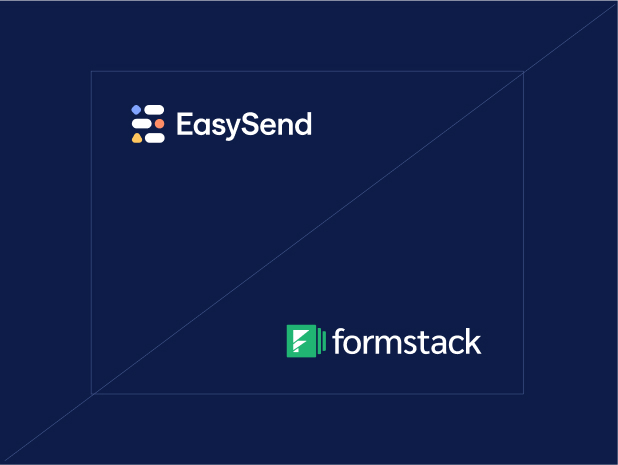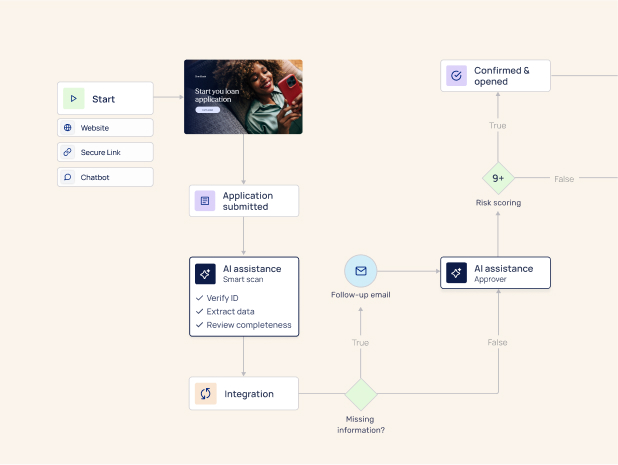As we progress through 2025, customer expectations for insurance services are continuing to grow. From personalized policy recommendations to seamless omnichannel journeys, insurance consumers want the same frictionless, self-service experiences they’re now used to getting from e-commerce giants and tech-driven disruptors. In order to stay competitive in this shifting landscape, it’s essential to embrace customer experience (CX) as a key differentiator. Failing to do so risks getting left behind by competitors who do offer streamlined, personalized, self-service experiences.
In this blog, we look at the most meaningful trends in customer experience expected to emerge in 2025 and beyond, and how digital platforms like EasySend can help you keep up.
Why customer experience (CX) matters in insurance
With the world becoming more digital, personal, and convenient by the day, customer experience has become a key differentiator in the insurance industry. Competitive rates and comprehensive coverage are no longer enough to make a customer choose you over the next guy. The modern customer wants speed, personalization, and frictionless interactions, the same effortless experience that they get with e-commerce giants and fintech platforms. Insurers that don’t meet these expectations will lose customers to more agile competitors.
McKinsey highlights the power of CX as a business driver, noting that insurers with top-tier CX see higher TSR than their peers–20% higher for life insurers and a whopping 65% higher for P&C. Moreover, CX leaders also have 4% higher revenue growth and EBIT growth.
The pressure to improve CX isn’t only coming from outside of the insurance industry. Digital native competitors and insurtech companies like Lemonade are changing what customers expect from insurers – fast claims processing and personalized policies with a few clicks. Traditional insurers must modernize or risk being left behind as consumers get used to these streamlined processes.
Emerging customer experience trends for 2025 and beyond
Looking toward 2025, let’s unpack five customer experience trends that will become prominent and how you can leverage them to improve customer retention, boost CLV, and reduce operational costs.
Personalization through AI and data analytics
Personalization has been a growing CX expectation for years, leading to higher customer satisfaction, increased loyalty, and improved retention. In insurance, this involves offering tailored policies, personalized communications, and relevant product recommendations.
In 2025, AI, predictive analytics, and machine learning are going to make it possible to hyper-personalize customer experience. These technologies collect and analyze huge amounts of customer data to create dynamic, real-time customer profiles. Predictive analytics identify patterns in customer behavior to predict what customers will need to buy before they actually need to buy it, allowing you to offer accurate, timely product recommendations, effectively “reading your customers’ minds” and creating next-level experiences.
Digital self-service platforms
With customers increasingly expecting quick, easy, autonomous ways to access support, get answers, and manage their policies, self-service platforms are becoming a key part of CX in insurance. These platforms empower customers to complete tasks like updating policy details, filing claims, or accessing FAQs, all without waiting for an agent. Key features of effective self-service platforms are interactive FAQs, AI-powered chatbots, virtual assistants, and the ability to securely upload documents. In their CX Trends 2025 Report, Zendesk points out that 90% of “CX Trendsetters” report positive ROI on AI tools for customer service agents, contributing to higher adoption of autonomous service.
Embracing self-service offers numerous benefits, including:
- Improving customer satisfaction
- Reducing call center load
- Saving operational costs
- Minimizing human errors
- Freeing up customer service agents to handle more complex tasks

Omnichannel engagement
According to McKinsey, 60% of insurance customers switch channels pre-purchase, highlighting the importance of creating a seamless omnichannel experience in which customers can begin their journey on one channel (like a website or mobile app) and continue on another (like a live chat or phone support) without losing context. To meet modern customer expectations, you need to craft journeys characterized by a series of smooth, connected touchpoints. Failing to do so carries an increased risk of frustrating customers and increasing churn rates.
One of the most common pain points policyholders report is repeating information while switching channels. To achieve true omnichannel engagement, you have to break down silos, integrating communication across phone, email, chat, and in-person interactions. By connecting platforms and customer data across all channels, agents can pick up where previous interactions left off. Advanced CRM tools, digital platforms, and interaction experience management platforms can support this continuity.
Automation of underwriting and claims processes
Claims processing and underwriting have traditionally been manual, time-consuming, and error-prone, but an industry-wide shift toward automation is considerably cutting down processing times.
Automation enables straight-through processing (STP), where claims are automatically assessed and settled without manual intervention. This has become a key differentiator, increasing efficiency, reducing operational costs, and requiring fewer manual interventions. In turn, customers get faster claim resolution, leading to higher customer satisfaction and building trust.
Automation is also reshaping the underwriting process. Using predictive analytics and machine learning, insurers can quickly analyze massive amounts of policyholder data for faster, better underwriting decisions. In a competitive environment where customers want instant, seamless digital experiences, automation can help you offer more personalized policy options, pay out claims faster, and cut down on the number of disputes.
Integration with core systems and third-party services
Insurers regularly work with customer relationship management (CRM) systems, policy administration platforms, and payment processing tools to manage customer interactions, underwriting, and claims processing. When these systems work in isolation, it causes inefficiency, delay, and redundancies. Data silos slow down response times, negatively impacting customer satisfaction and retention. That’s why insurers are increasingly migrating toward connected systems that support real-time data sharing.
To achieve seamless integration, you must embrace modern cloud-based, API-first platforms, enabling faster service, more effective decision-making, and personalization of products. By connecting once-disparate systems in a centralized environment, data can flow freely, and all teams—claims, underwriting, and more—can access the same information. This supports faster claim settlement, better risk assessment, and superior customer support.
How digital platforms like EasySend enable these emerging trends
Digital platforms like EasySend are key to helping insurers keep up with emerging CX trends, offering essential capabilities that drive growth, efficiency, and customer satisfaction. They facilitate these emerging trends by:
- Powered by data and AI: EasySend leverages data analytics to create personalized experiences that adapt to the needs of each customer, recommending the right products, policy terms, and user experiences for each individual.
- Self-service experiences without friction: The digital platform provides policyholders with real-time access and management for quotes, policies, endorsements, and claims without a call center or manual intervention.
- Omnichannel engagement: EasySend helps you deliver a seamless experience across phone, email, chat, and mobile apps, providing a consistent, smoother customer experience no matter which channel the customer uses.
- Underwriting and claims automation: The platform’s automation digitizes and accelerates underwriting and claims processing through seamless workflows, speeding up service delivery, improving claims resolution, and lowering costs.
- Unified data core system integration: EasySend bridges the gap between disconnected systems, integrating with CRMs, policy admin systems, and third-party tools to enable better decision-making, faster service, and more personalized customer interactions.
Embracing CX innovation for a competitive edge
In 2025 and beyond, customer experience will be the difference between leading insurers and the rest of the pack. As personalization, omnichannel engagement, self-service platforms, and AI-driven automation become industry standards, you’ll have to adapt to these trends to keep up –or lead.
EasySend can help you meet these rising expectations, offering a comprehensive digital platform that enables faster workflows, better customer satisfaction, and higher operational efficiency. By embracing these technologies today, you’ll be well-positioned for growth, agility, and long-term competitiveness as the industry continues to evolve.
To learn more about how EasySend can empower your organization with seamless digital interactions, streamlined workflows, and enhanced customer experiences, schedule a demo today.





